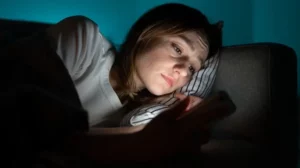In the complex landscape of mental health, individuals often grapple with various attachment styles that impact their relationships and well-being. Among these, the anxious attachment style stands out for its unique challenges. But here’s the good news: there’s a promising solution that doesn’t involve complicated jargon or confusing therapy sessions. It’s called Cognitive Behavioral Therapy (CBT), and it’s like a friendly guide helping you through the twists and turns of anxious attachment. In this blog, we’re going to break down exactly how CBT works for anxious attachment, exploring its simple yet powerful principles, and practical applications. So, get ready to discover how this down-to-earth therapy can make a real difference in your life and relationships!
Contents
Understanding Anxious Attachment
 Ever felt a bit uneasy in relationships, like there’s a constant worry about being left behind? That might just be the essence of anxious attachment. Let’s break it down into simple terms:
Ever felt a bit uneasy in relationships, like there’s a constant worry about being left behind? That might just be the essence of anxious attachment. Let’s break it down into simple terms:
Anxious attachment is like having a strong fear of being abandoned or unloved. It often leads to seeking reassurance, fearing rejection, and feeling a bit clingy in relationships.
Characteristics:
- A constant need for validation and approval from others.
- Difficulty trusting that people will stay in your life.
- Intense fear of rejection, often leading to overthinking and worrying.
Now, how does this attachment style play out in the grand scheme of life? Well, buckle up, because it has a significant impact:
Impact on Relationships:
- Tendency to become overly dependent on a partner for emotional support.
- Difficulty expressing needs and setting boundaries.
- Struggles with maintaining a sense of individuality within a relationship.
Impact on Mental Health:
- Increased levels of stress and anxiety in interpersonal situations.
- Potential for a cycle of self-doubt and negative thoughts.
- Challenges in forming and maintaining healthy, stable relationships.
Understanding anxious attachment is like shining a light on the patterns that might be affecting your relationships and mental well-being. Now that we’ve got the basics, let’s explore how Cognitive Behavioral Therapy (CBT) can be a game-changer in navigating these challenges.
Does CBT Help with Anxious Attachment?

You might be wondering, can something as straightforward as Cognitive Behavioral Therapy (CBT) really make a difference when it comes to anxious attachment?
The short answer: yes! CBT has proven to be highly effective in helping individuals with anxious attachment. Here’s why:
Establishing Healthier Patterns:
- CBT doesn’t just stop at addressing thoughts; it extends to behaviors too.
- By developing healthier patterns of thinking and behaving, individuals can build more secure attachments in their relationships.
Real-Life Success Stories:
- There’s nothing more convincing than real stories of people who’ve been there and come out the other side.
- Many individuals have found success in managing anxious attachment through consistent CBT, leading to more fulfilling and secure relationships.
So, if you’re on the fence about whether CBT can help with anxious attachment, the evidence suggests that it’s a valuable tool in breaking free from the grip of anxiety and fostering healthier connections.
The Role of CBT in Addressing Attachment Styles
 Imagine Cognitive Behavioral Therapy (CBT) as your trusted guide in the journey of understanding and transforming attachment styles. Here’s how CBT plays a pivotal role:
Imagine Cognitive Behavioral Therapy (CBT) as your trusted guide in the journey of understanding and transforming attachment styles. Here’s how CBT plays a pivotal role:
Overview of CBT Principles:
- CBT is rooted in the idea that thoughts, feelings, and behaviors are interconnected.
- It’s not about diving into the depths of your past but focusing on the present and future, making it practical and solution-oriented.
Adaptability to Various Attachment Styles:
- CBT doesn’t believe in a one-size-fits-all approach.
- Whether you’re dealing with anxious attachment, avoidant attachment, or any other style, CBT adapts its strategies to fit your unique needs.
So, how does CBT become your ally in addressing attachment styles?
Identifying Thought Patterns:
- CBT is like a detective for your mind, helping you identify thought patterns associated with your attachment style.
- It’s about understanding how your thoughts impact your feelings and behaviors, especially in the context of relationships.
Modifying Negative Thought Patterns:
- Once those patterns are identified, CBT provides practical tools to challenge and modify negative thoughts.
- This isn’t about erasing your personality but creating a healthier mindset, particularly when it comes to forming attachments.
In essence, CBT is not just about understanding attachment styles; it’s about actively reshaping them. The adaptability of CBT makes it a versatile tool that can empower individuals to navigate the complexities of their unique attachment experiences.

 Now, let’s unravel the magic of Cognitive Behavioral Therapy (CBT) and how it precisely addresses the anxious thoughts and behaviors associated with attachment styles:
Now, let’s unravel the magic of Cognitive Behavioral Therapy (CBT) and how it precisely addresses the anxious thoughts and behaviors associated with attachment styles:
 Cognitive Behavioral Therapy (CBT) doesn’t limit its impact to therapy sessions; it extends into your daily life. Here are some practical CBT techniques you can easily practice at home to manage anxious thoughts and incorporate these principles into your routine:
Cognitive Behavioral Therapy (CBT) doesn’t limit its impact to therapy sessions; it extends into your daily life. Here are some practical CBT techniques you can easily practice at home to manage anxious thoughts and incorporate these principles into your routine:
